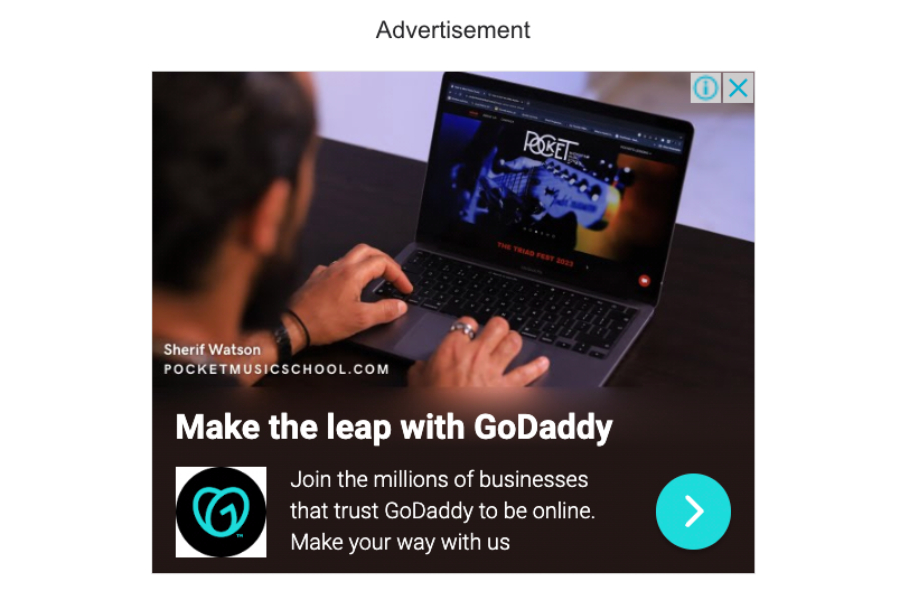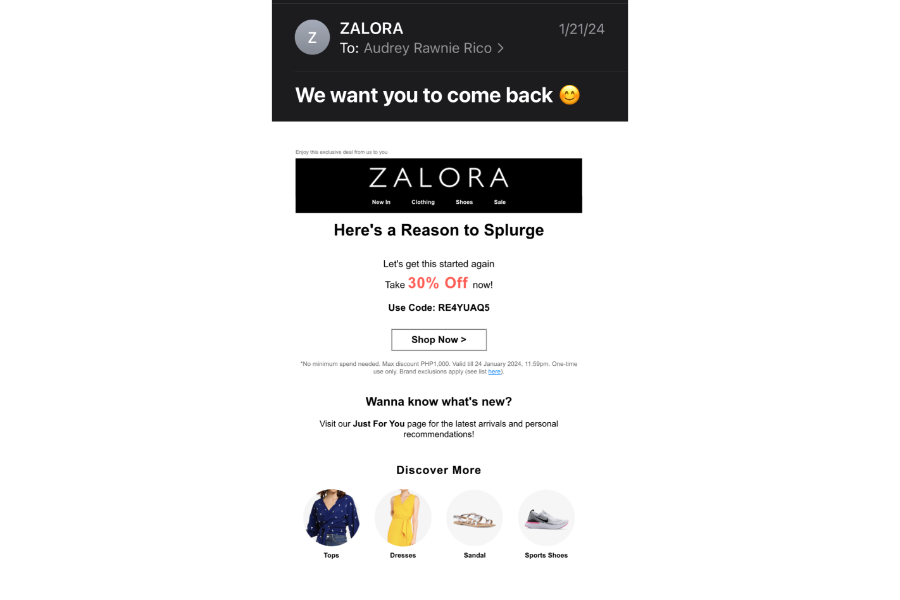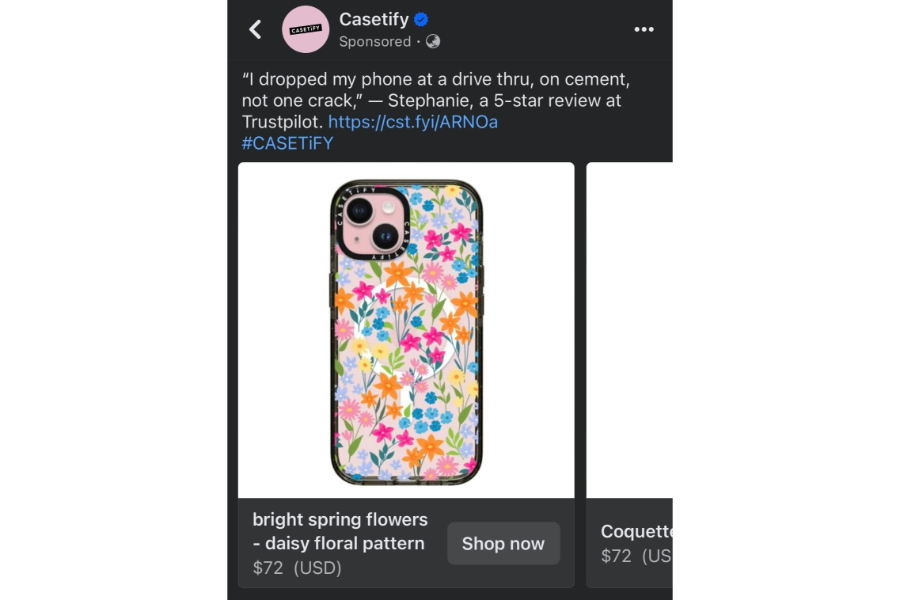Marketing is never a one-and-done journey. On the contrary, marketing is most effective when it keeps customers coming back for more. Sometimes that return happens organically, but other times customers just need a little extra push. The term for that encouragement is remarketing, and it’s one of the most powerful strategies in your marketing toolbox. Here, we’ll answer what is remarketing, how it works, and how you can get started with it.
What Is Remarketing?
Remarketing is simply marketing again to people who have previously interacted with your company in some way—either by buying a product or just visiting your website. Remarketing lets you bring them back to your brand.
Think of it as a second chance to win back previous customers or audiences who may have become inactive. It’s a way of maintaining your brand presence among potential customers and keeping them within your brand’s ecosystem.
For instance, say you sent a holiday email campaign the previous December to bolster last quarter’s sales. Now that it’s the spring season, you want those customers who responded to your campaign to come back and purchase your new product line. So, you target them via ads on Facebook or Google to offer them recommendations based on what they purchased back in December. If they purchased a pair of socks, they might like your new line of sandals.
Another good example of remarketing is if customers who subscribed to a free trial of an app or software are then later retargeted to purchase a full subscription, like with Spotify’s Google ads remarketing Spotify Premium. These ads are targeted specifically to people using the free version:

Spotify uses retargeting ads like this to get free Spotify users to return and purchase the premium version. (Source: Spotify)
How Remarketing Works
You may be wondering how it’s possible to target audiences so precisely. The simple answer is: audience data. With users’ consent (usually website cookies and pixel tracking), company websites can collect precise audience data that can help create these targeted experiences.
Because of how cookies and pixels work, remarketing isn’t exclusively for bringing back customers who previously purchased from your brand. It also enables you to place ads on the screens of individuals who interacted with your social media post or website—but then left without making a purchase.
Here are some other examples of remarketing:
- If someone entered and then left your website, you can use Google remarketing ads to bring them back.
- If a customer abandoned an item in their cart, sending an automated email can encourage them to continue their purchase. (Note: Many businesses will even extend coupon codes for special pricing to entice customers who’ve left an abandoned cart to complete their purchase.)
- Using ads on Facebook targeted at someone looking for hotel rooms, you can encourage them to finalize their booking.
- Remarketing with Facebook via ads allows you to offer personalized product recommendations to a customer based on their previous buying behavior.
Remarketing works in many situations, but most particularly on two platforms: Facebook and Google. This is because these platforms have some of the best audience data and targeting tools that allow for more precise targeting.
Retargeting vs Remarketing
You will probably see retargeting and remarketing used interchangeably, and they do have many overlaps. For example, both have the same ultimate goal of getting previous customers to re-engage with your brand. The main difference is that “remarketing” is a broader term for the practice overall, while “retargeting” refers specifically to digital ads.
So, for example, if you sent a second or third email to the customer who abandoned an item in their cart, that would fall under remarketing. Meanwhile, if you specifically target an ad on Google or Facebook to someone who visited your website to entice them to come back, that falls under retargeting—although it’s technically also a form of remarketing.
Retargeting is a more specific practice because the tools that allow for it, i.e., website cookies and tracking pixels, are used primarily on Google and social media ads. They allow you to have more accurate and precise audience data. In contrast, not all remarketing campaigns have the same level of precise audience targeting. So, campaigns like abandoned cart emails or coupon marketing are all considered remarketing.
Here are main differences between retargeting vs remarketing:
Remarketing | Retargeting |
|---|---|
|
|
Long story short: If you want to refer to the overall practice of winning old customers back, you would call that remarketing. But if you want to win them back specifically via targeted ads on Google or Facebook using their audience data, you would use retargeting.
Why Remarketing (& Retargeting) Is Important to Your Business
Any good business owner knows that the key to your business’ longevity is keeping customers interested and coming back. Whether that means keeping them engaged throughout the entire sales pipeline or recapturing back old customers, your customers are always the beginning and end point of your entire journey. That’s where remarketing (and retargeting) becomes valuable—it’s your best strategy to keep customers engaged with your brand.
Here are some of the most important ways that remarketing can retargeting can help your business:
- Generating traffic to your site: Many remarketing strategies can bring traffic to your site. For instance, use remarketing ads on Facebook to target audiences who follow specific pages to entice them to your site. Email marketing is also a good avenue for getting clicks from people who’ve previously connected with your brand, or even organic social media marketing with the right audience targeting.
- Converting traffic into leads: If someone visits your website, takes a look around, but then ultimately leaves, retargeting them via Google ads based on their behavior can get them to come back and complete an action. This can be anything from signing up for a newsletter to adding an item to their cart.
- Converting leads into customers: Say your customer added an item in their cart—but didn’t check it out. They’re at the very end of the sales funnel and just need that extra push. That extra push can be a targeted Facebook or Google ad, an email with a free shipping offer, or a discount coupon. All of these fall under remarketing.
- Encouraging more purchases: If your customer successfully purchased from your business, that shouldn’t be the end of the road. Getting previous customers to re-engage or purchase again is where remarketing is especially effective. For instance, you can send other product recommendations via email or targeted Facebook ads based on their purchase.
The strategies above all show that remarketing (and retargeting) can help your business in a multitude of ways. It all comes down to how you leverage them to serve your business’ goals and interests.
Getting Started With Remarketing: Essential Tools & Platforms
Remarketing can work for many objectives and avenues. Therefore, the first order of business when starting with remarketing is to determine your primary objective. Do you want to get a previous customer to make a new purchase, or simply bring back a previous website visitor to sign up for your newsletter? Both of these will require very different modes of remarketing.
Once you’ve clearly defined your main objective, you can then get started with your remarketing strategy, whether it’s sending automated emails or setting up an ad on Google. Clarifying your objective is also important because it also determines the platforms and tools you’ll use. Below are some of the most important tools you’ll need for both remarketing and retargeting.
- Email marketing platforms: Email marketing is one of the biggest remarketing avenues. You’ll need a platform that allows automated drip campaigns triggered by audience behavior (for example, cart abandonment), like Mailchimp and ActiveCampaign. Find more about them, and your other options, in our guide to the best email marketing platforms.
- Keyword research tools: You can also retarget your blogs to reach the audiences you want, although it will take more time. This is possible by doing keyword research to find out the topics your target audience is searching for the most, and then crafting or editing your content around those topics, adding their search keywords, and so on.
- Social media audience targeting: Remarketing on social media platforms involves using their audience targeting tools. For example, you can do Facebook remarketing organically by targeting your post to specific audience demographics and interests, or engaging with Facebook groups. Platforms like Instagram and TikTok also have similar features.
- Google Analytics and Search Console: These measure your website visitors’ behavior. Both are free to start and set up and can give you detailed data like session durations, your most-clicked links, top user demographics, and so on. However, these platforms are solely for collecting user data—they don’t have any tools for setting up Google remarketing ads.
- Google Ads Retargeting: These are Google’s tools for retargeting ads. You can retarget your Google ads manually or use Google’s dynamic ads for more precise targeting. Find more about them here.
- Facebook Pixel, software development kit (SDK), and Custom Audience: These are the tools that let you do Facebook ads retargeting based on website and app behavior. Find more about them here.
- Facebook Advantage+ Catalog Ads: These Facebook ads use artificial intelligence (AI) to automatically target your ads to users based on their specific behavior, preferences, and more. Learn more about them here.
3 Examples of Remarketing That Work
Remarketing (and retargeting) can seem complicated, but it’s really just about recalibrating how you communicate with your audiences to make more impact. It’s also effective. Remarketing can build steady customer engagement with your business, and even foster brand loyalty. Take, for example, the brands below, which use remarketing strategies in different ways to bring customers back to their business. Use them as inspiration for your own remarketing strategy.
Example 1: GoDaddy

GoDaddy’s retargeted Google ad targets customers who are still in the deciding stage.
A good example of Google remarketing is this Google image ad from the website builder platform GoDaddy. It’s effective because it targets audiences at just the right time of the customer journey: when they’re still in the process of deciding are researching other tools. However, this ad from GoDaddy instantly gives it a leg up. It also encourages trust through its copies (“Make the leap” and “Join millions of businesses”).
This ad was set up on Google as a pay-per-click (PPC) ad and is likely targeted at users who previously visited their website.
Example 2: Agoda

Agoda sends targeted emails triggered by specific user behavior to help convert sales.
Remarketing via email can also be especially effective for businesses in the hospitality and tourism industry, like Agoda, the accommodation-booking platform. Sending remarketing emails can give their customers the push they need to finalize a hotel booking, say after viewing it in the app. This remarketing email example in particular is effective because it creates a sense of urgency and makes the booking process easy to complete within the email.
This type of targeted email marketing is possible through automated campaigns triggered by user behavior (in this case, viewing and then abandoning the accommodation’s Agoda page).
Example 3: The New Yorker

This The New Yorker Facebook ad specifically targets free users to convert them into paid subscribers of the magazine.
Targeting ads on Facebook can also convert free trial users into paid subscribers. This is especially helpful if you’re selling a subscription service, like The New Yorker’s online magazine (or say, a freemium app or software). You can target your ads to people who have been following your Facebook page and interacting with your website to convert them into paid subscribers.
In this case, The New Yorker’s ad is made even more enticing by offering a free gift and a limited discount. These types of ads are possible by using Facebook Pixels that target user data.
Frequently Asked Questions (FAQs)
Remarketing is using marketing or advertising tactics to win back previous customers of your business. This can mean anything from re-engaging inactive customers to interact with your brand again, to using Google remarketing ads to target specific customers. Other examples of remarketing are sending abandoned cart emails or offering limited-time coupons to win back customers.
Remarketing is the overall practice of marketing to win back customers while retargeting means winning them back specifically through targeted Google and social media ads. Retargeting uses more sophisticated audience data and technologies like website cookies and ad pixels. On the other hand, remarketing can encompass any marketing strategy to re-engage customers, like emails, blogs, or organic social media content.
Remarketing is important because it’s your best chance at winning back previous customers of your brand, whether they’re people who have previously bought from your business or casual visitors of your website that you want to bring back again. It’s also important because marketing isn’t always an instant success after your first try, so remarketing can help you recalibrate your strategy. It also helps build brand loyalty among your customers.
Bottom Line
Remarketing (and retargeting) can open a wide net of opportunities for your business. Marketing is rarely a one-shot instant success after one try, and customers aren’t always predictable. Their preferences and behaviors are constantly changing, which is why remarketing is so valuable. Knowing what remarketing is and how it works can help you capture your customers more effectively and build a stronger brand in the long run.

